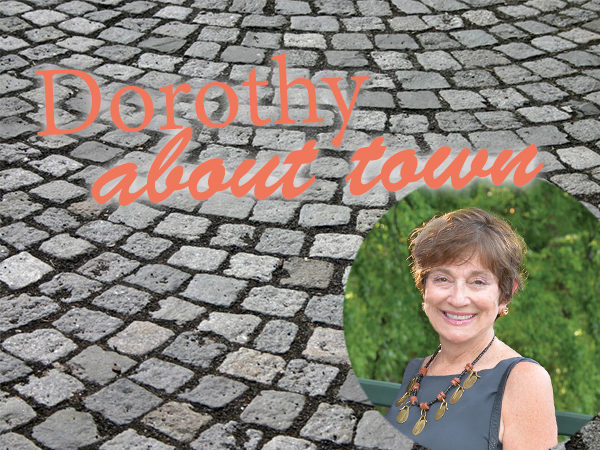As soon as I heard about an authentic, Italian-style piazza newly built on The Hill, I couldn’t wait to see it. Even if it turned out to be just a marble fountain with a bench nearby, I was prepared to love it. After all, it would be a thing of beauty, a new addition to an old neighborhood, and one that served no purpose other than bringing joy to, well, anyone who came by. Now that I’ve actually seen it, I’m happy to report that it’s much more than a fountain.
Right in the middle of the block, facing the neighborhood’s most iconic structure, St. Ambrose Church, sits a new little urban park, Piazza Imo. Yes, a fountain with stallion heads and fish spouting water is the centerpiece. But surrounding it are six benches where visitors can rest and ruminate; this fountain is not just for show, they say, but for solace. Saplings planted all around the park entice you to come back year after year to check on their progress. And being a piazza, this little urban sanctuary is, of course, cobblestoned. An elaborate wrought iron entrance welcomes everyone who passes by.
And there’s more. Beyond the main fountain, two chess stations are permanently anchored, with nearby wall fountains quietly trickling into their respective basins. A commemorative wall thanks the many businesses and individuals who turned an offbeat idea into a reality. The names are familiar: Ambrose, Bommarito, Frisella, Imo, Torrisi, Ruggeri, Oldani and many others. It’s touching to think that so many Italian families who came here as immigrants take pride in their roots and want to give back to the community that nurtured their forebears.
The Hill is special in this way. It has somehow retained a strong sense of community that feels like a throwback to the ’50s. It’s a true walking community, where neighborhood businesses thrive (especially the food-centric ones). The streets are so clean, even the alleys look like they just got
a sweeping. I think it’s fair to say that The Hill is a source of pride for all of us, not just those who live there or share in its Italian roots. Now we have one more reason—the piazza— to show it off to visiting family and friends. And to visit more often ourselves.
Dorothy About Town: 10.9.19
